- A single, transparent price
- Comprehensive solution
- Suitable for full-remote organizations

Our review of Basecamp
Basecamp is a collaboration software used by thousands of teams worldwide. It enables these teams to work on projects, communicate and organize their work efficiently.
My opinion
Customer reviews
- Few integrations
- Fairly closed environment
- High entry fee for small teams
Ideal for those looking for an all-in-one solution for documents and communication
From 13 per user
Free plan and 30-day free trial
Sommaire
Launched in 2004, Basecamp is the veteran of project management software, and a must-have in the field. It has been developed in different versions: Basecamp classic, Basecamp 2, and Basecamp 3.
Highly comprehensive, Basecamp boasts features specific to other software, and replaces Slack, Asana, Dropbox, and the entire Google suite, for example.
It’s the ideal tool for large teams looking for a tried-and-tested scheduling software.
In this article, we tell you everything you need to know about Basecamp!
Before going any further
See our comparison of the best project management tools!
Sommaire
My opinion of Basecamp in a nutshell
| Perimeter | Score | My opinion |
|---|---|---|
| Overall rating | 4,7 | A veteran of the planning software market, Basecamp is a comprehensive software package designed primarily for large teams and medium-complexity projects. |
| Ease of use | 4,8 | Basecamp is very intuitive and easy to use |
| Easy to set up | 4,8 | Basecamp is very easy to learn, even for large teams. |
| Customer service | 4,6 | Basecamp’s customer service is easy to reach, and its help center is very comprehensive, but Basecamp doesn’t run a community around its tool. |
| Functional depth | 4,5 | Basecamp offers many features, especially for communication and collaboration, but can be too lightweight for complex projects. |
| Integrations | 4,7 | Basecamp offers a wide range of integrations, and integration with Zapier gives access to over 4,000 additional integrations. |
| Value for money | 4,5 | Basecamp is the only project management software that charges per team, not per user. Its value for money is therefore more attractive for larger teams than smaller ones. |
The advantages and disadvantages of Basecamp
- Communication and collaboration: Basecamp offers both live chat for internal collaboration, and client access to the software for external communication.
- Ease of learning: Basecamp is easy to get to grips with, which is great for teams new to this kind of platform.
- Less-developed task management and visualization: Basecamp is very strong on communication and collaboration, but less so on task and schedule management…
- Basecamp is too light for complex projects: the tool’s functional depth is more limited than that of some of its competitors (e.g. Monday).
Basecamp: Features at a glance
Communication tools: Basecamp’s real strength
Campfire is Basecamp’s chat function, which you can use to communicate with your team members in real time. Each project and team has its own Campfire room.
This is Basecamp’s internal social network. It can be used for work, but also for more informal discussions.
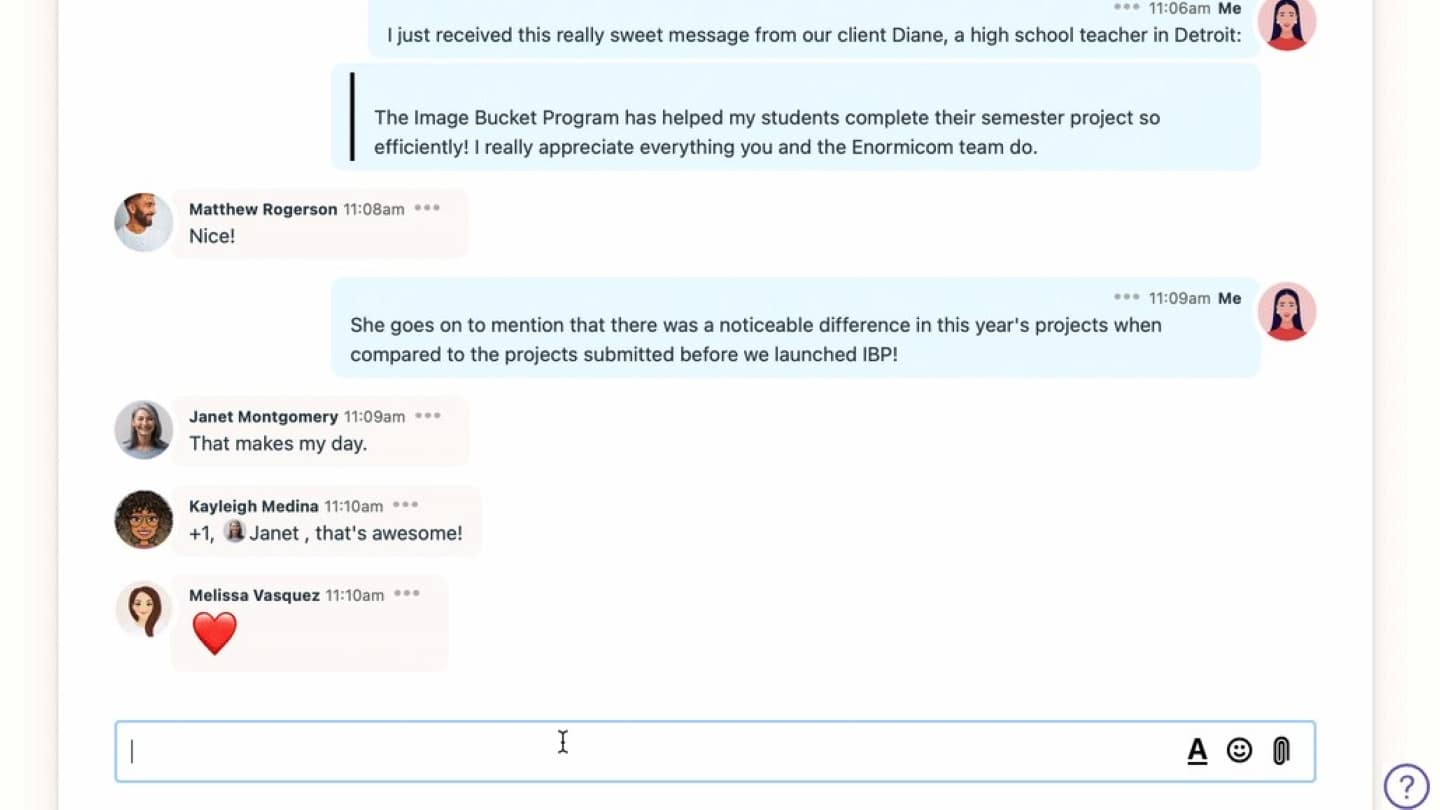
Campfire supports sounds, and is highly customizable: a toolbar lets you add bold, italics, colors, hyperlinks, bulleted lists, emojis… It’s also possible to tag a person directly, by preceding their name with an “@”.
For communication, Basecamp also offers “Pings”, which are private discussions with one or more people that can be accessed at any time from the navigation menu.
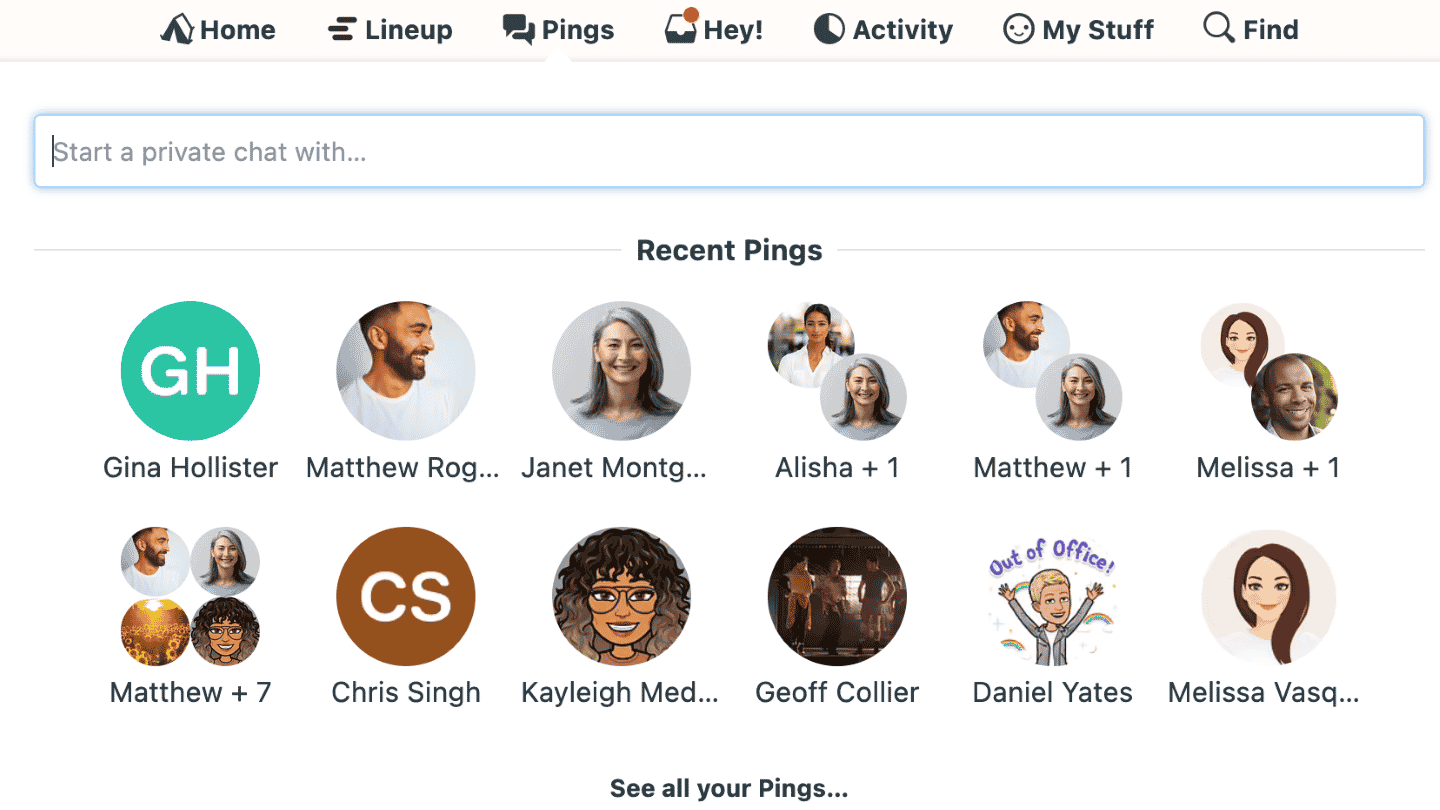
Collaboration between users
In Basecamp, each project or team has its own bulletin board. It’s a space dedicated to announcements, ideas, questions and feedback.
All messages exchanged on the bulletin board are linked to a specific project or team. This board can be used to pass on any message to all team members.
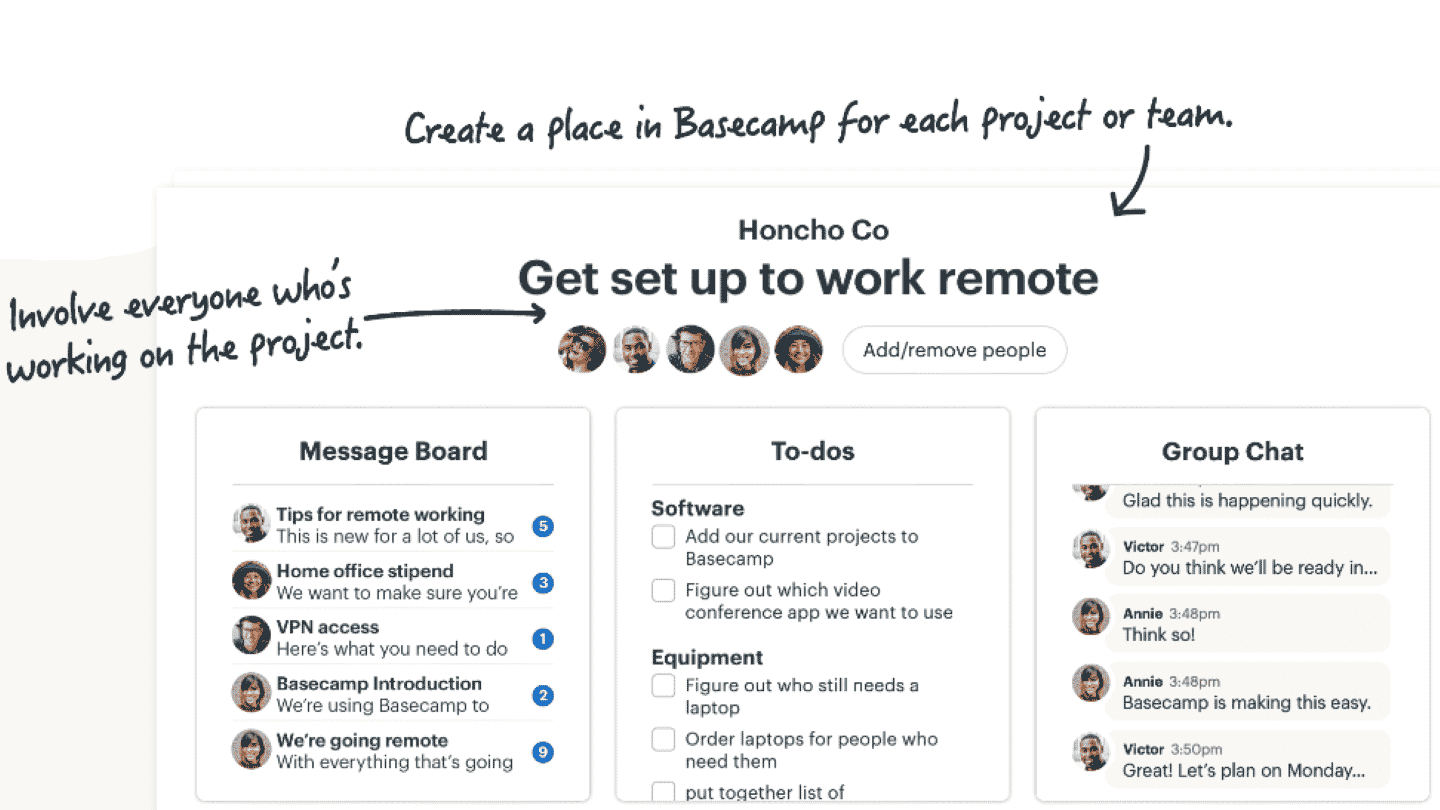
It lets you classify messages into customizable categories, filter messages by category, and change the sorting order (by date, alphabetically…).
This bulletin board is also customizable: you can change the text color, highlight it, add headings and bulleted lists, and even integrate images.
Project management
Basecamp offers a wide range of project management tools. By default, every new project or team is equipped with a Calendar function, allowing you to view all upcoming tasks and events.
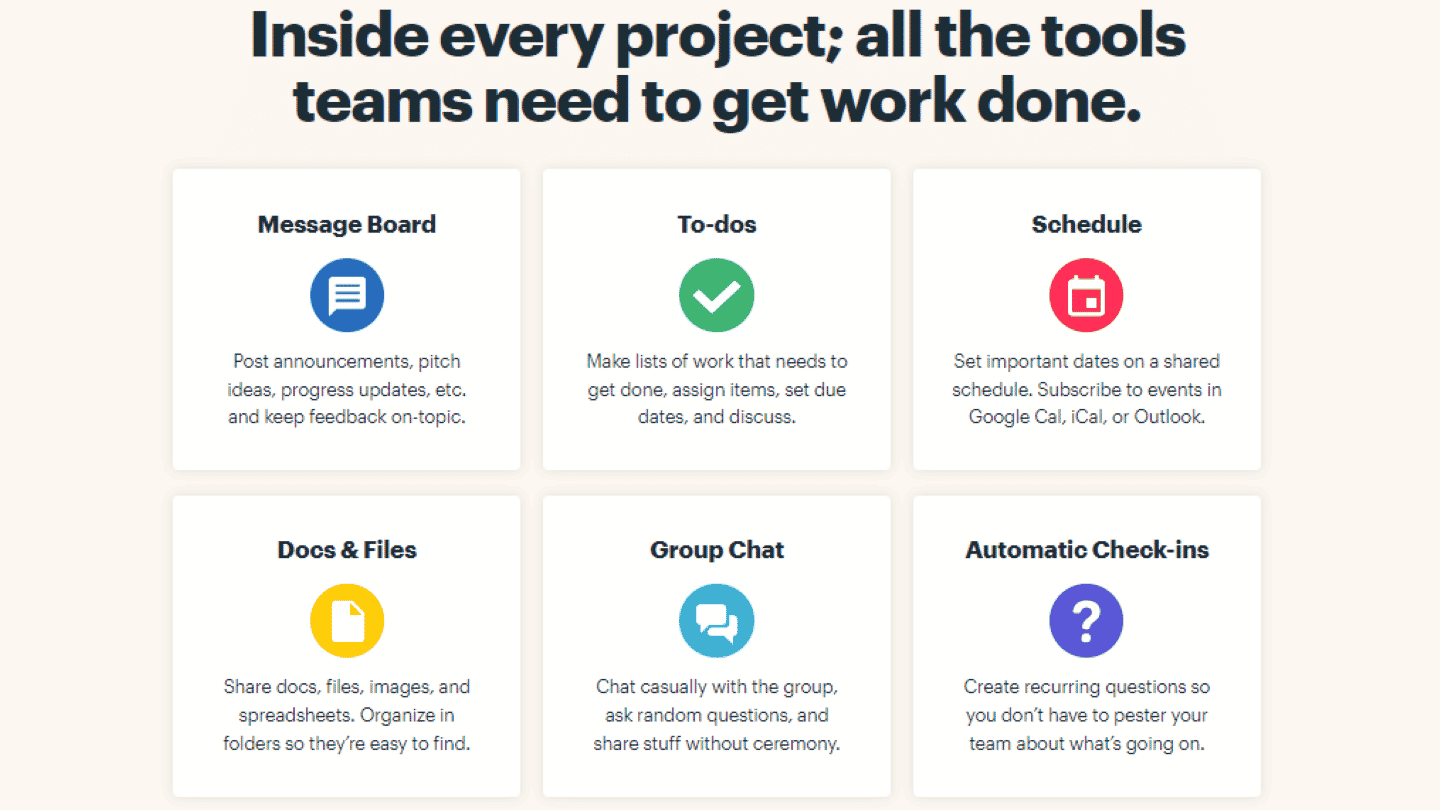
A new event can be added directly from this page, and by clicking on a given date, you can see all the scheduled tasks and people involved.
Events may last a day or several days, and may recur on a regular basis. They can include notes to inform other team members. Simply mention a collaborator in the event and he or she will receive a notification.
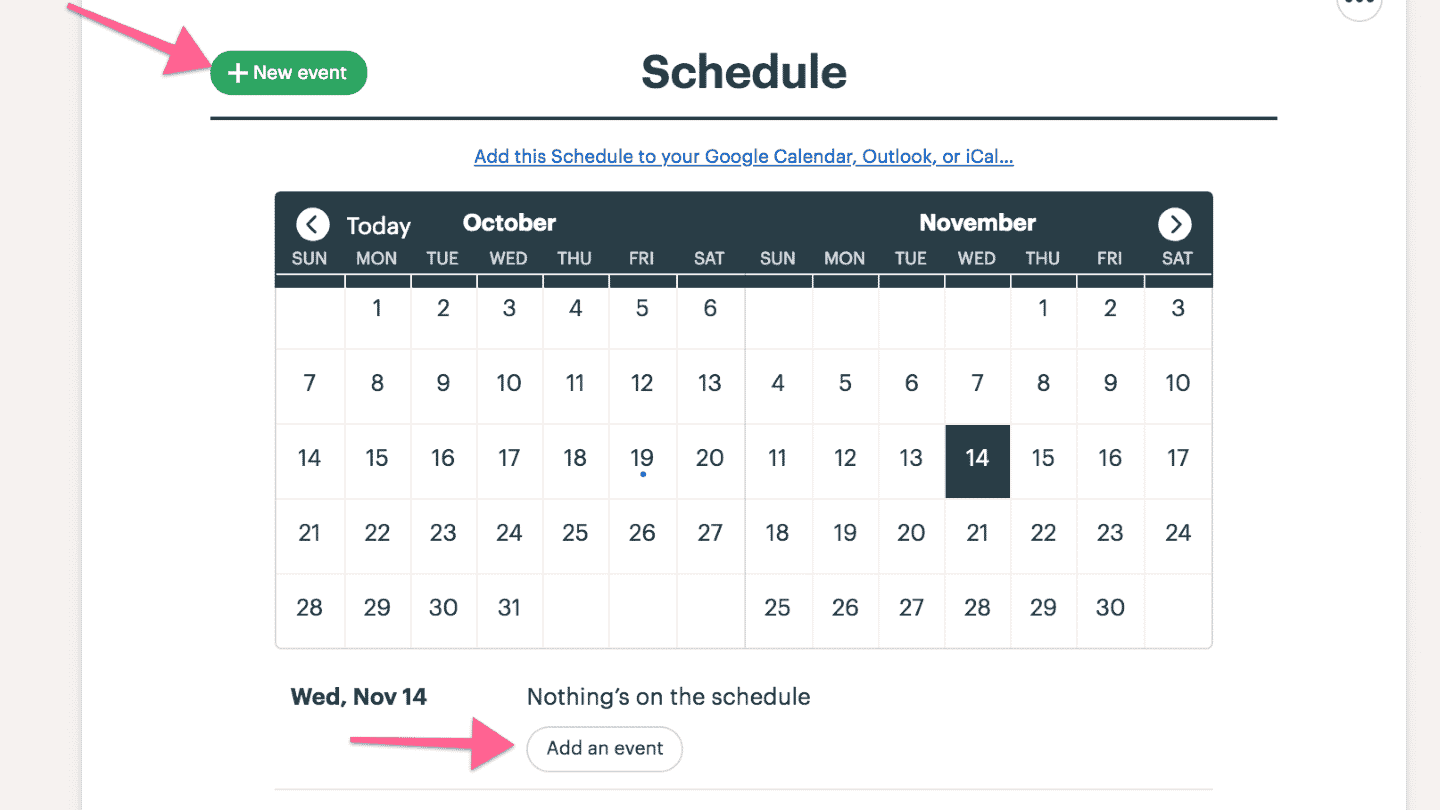
The entire calendar can be synchronized with an internal calendar platform such as Google Calendar, Outlook or Apple Calendar, as well as individual events.
Basecamp features Automatic Check-Ins. It allows managers to create personalized questions that team members can answer in their own time.
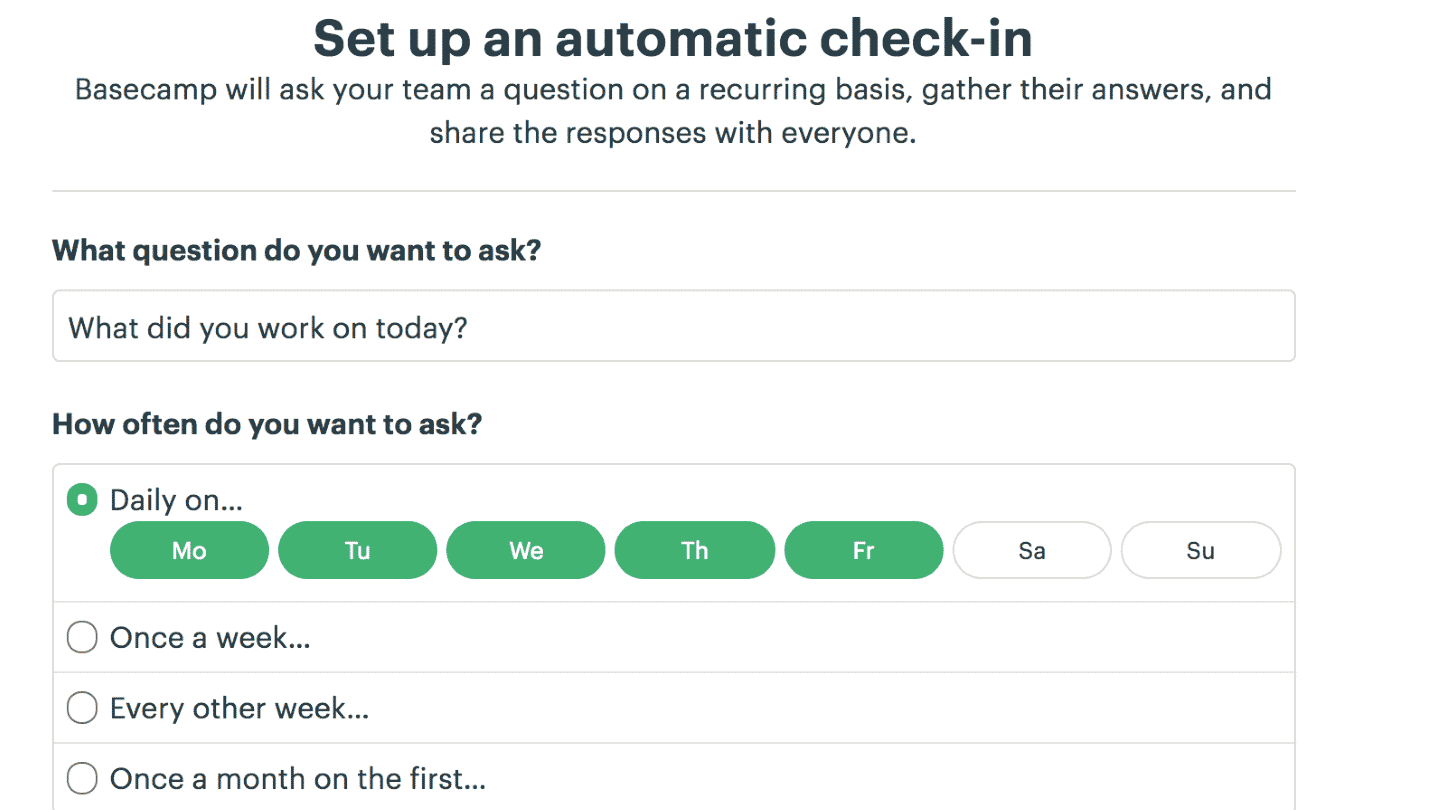
You can ask questions on a daily, weekly or monthly basis. You can also filter who can see questions, and ask questions of your whole team, specific members or particular groups.
For example, you could send out daily check-ins asking team members what they’re working on today. This feature is excellent for avoiding time-consuming meetings.
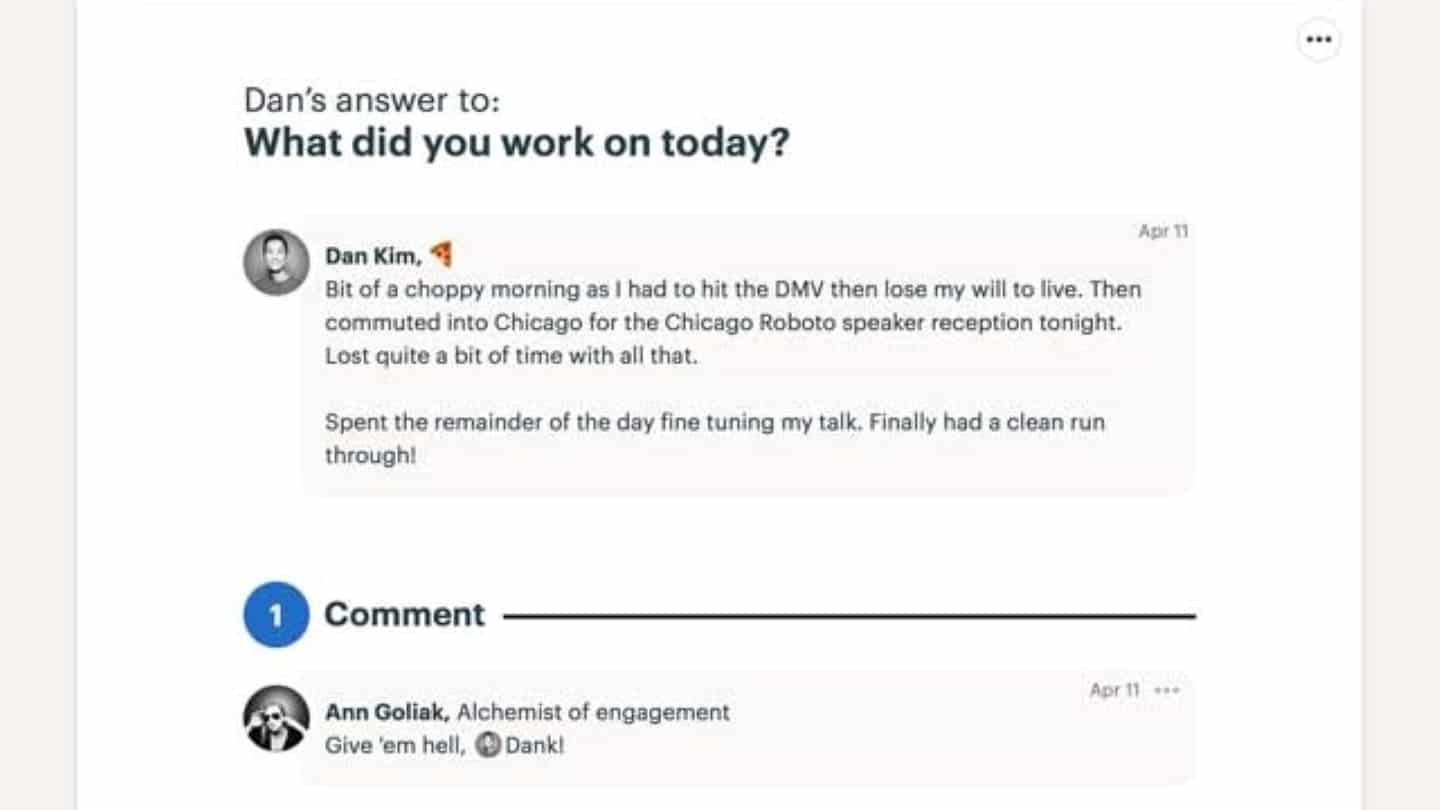
Lineup is a new visual timeline, recently introduced by Basecamp. It allows you to see what you’ve been working on over the last few weeks, what you’re currently working on, and what’s next in your project.
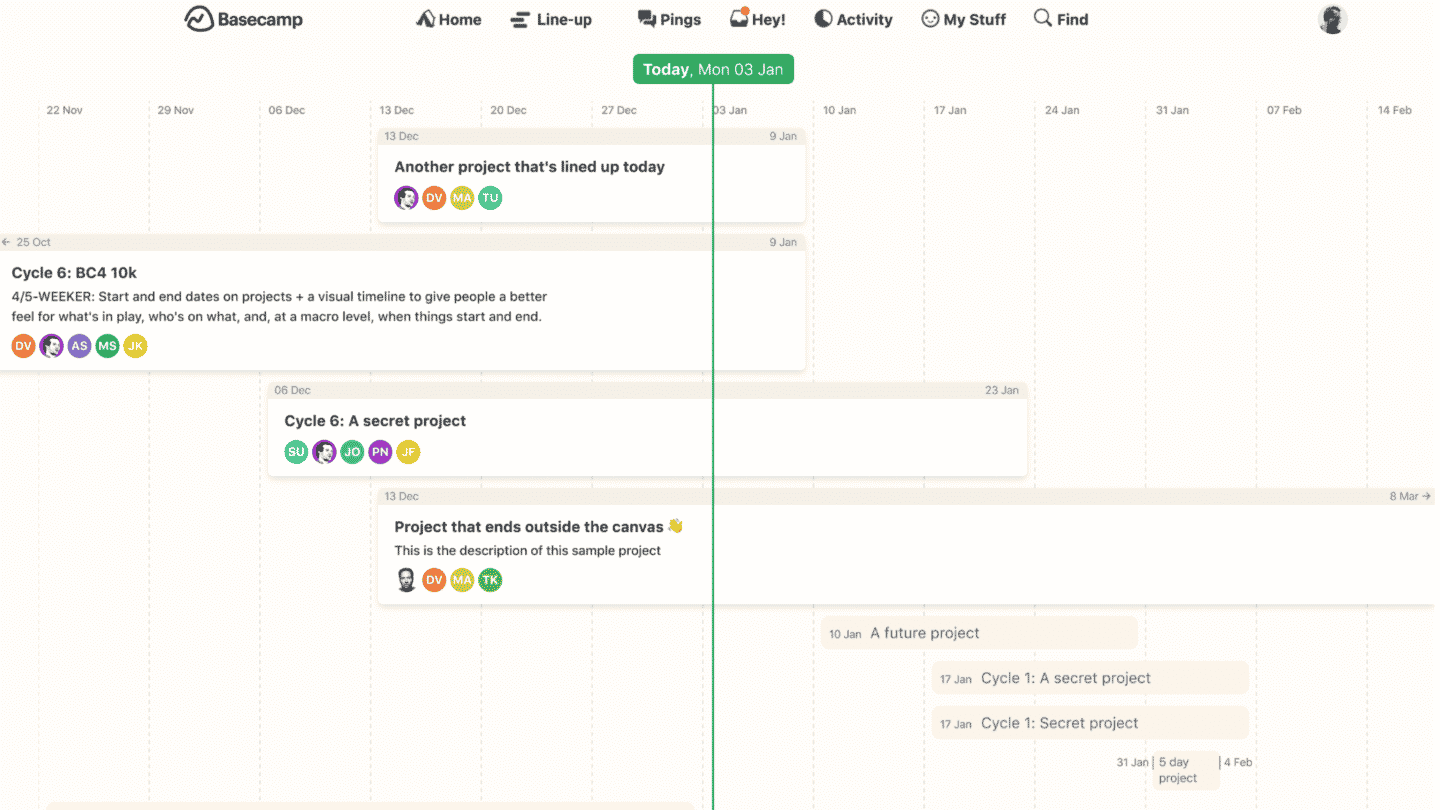
With it, you can see all projects with start and finish dates in one place. Lineup shows 13 weeks at the same time: you can see the last six weeks, the six weeks to come and the current week, in the center.
This is an essential feature if you’re managing several projects and want to keep abreast of everything that’s happening on all of them.
Discover Basecamp
Discover all the Basecamp features!
Customer reviews of Basecamp
- Customers generally appreciate Basecamp’s ease of use. They emphasize customization and the possibility of creating spaces for each team. They also appreciate the communication and collaboration features.
- However, some customers complain of a lack of functionality between versions, which can be a problem for complex projects. They also find that the different versions of Basecamp make the tool difficult to understand.
Make up your own mind about Basecamp!
Customer support at Basecamp
The customer support page lets you contact the support team directly, via a contact form only. Response time is short (a few tens of minutes), and the service is available 24/24 from Monday to Tuesday, and from 9am to 6am at weekends.
To help you solve problems on your own, the customer support page also offers a number of “How-to guides”, explaining how to use the tool, how to manage a project, and how to work with customers using Basecamp.
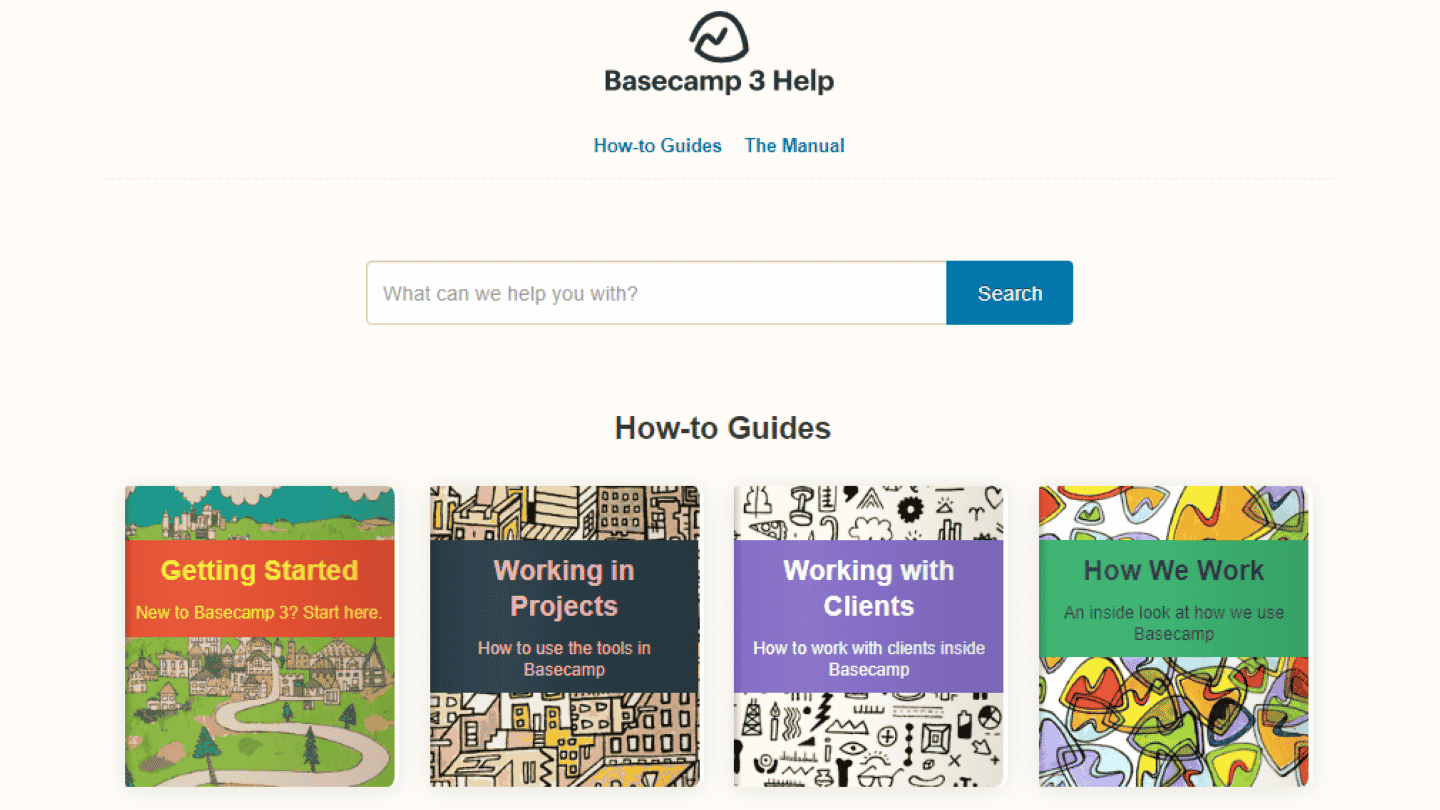
This page also contains manuals on various topics, such as billing, applications and personal settings.

The Basecamp help page also contains a number of videos to help you learn how to use the tool independently.
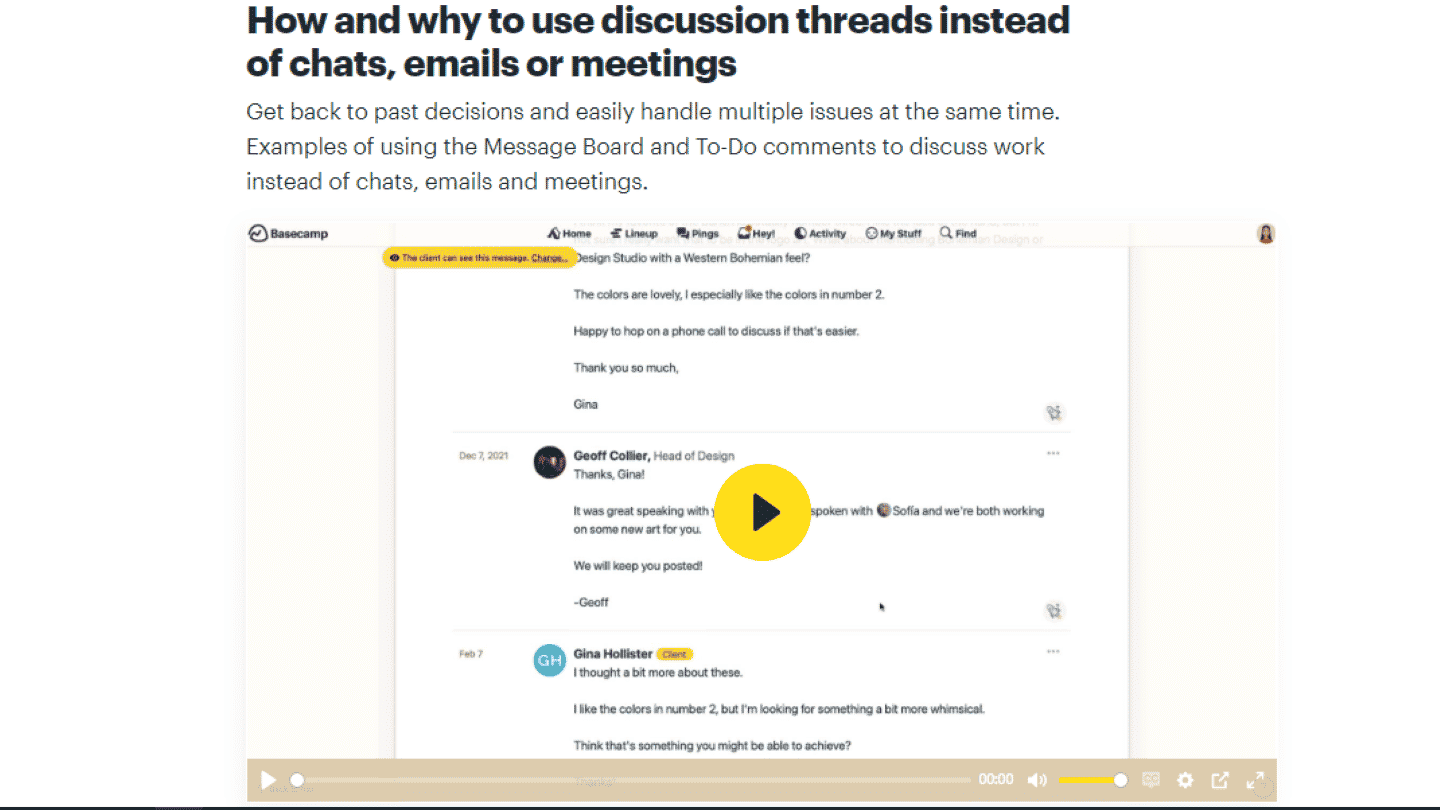
On a negative note, Basecamp doesn’t run a community around the tool, which would enable direct sharing of tips and problem-solving techniques.
Make up your own mind about the Basecamp Help Center!
The Basecamp integration marketplace
Integrations are necessary to facilitate links with other tools used by teams or customers, and to facilitate collaboration.
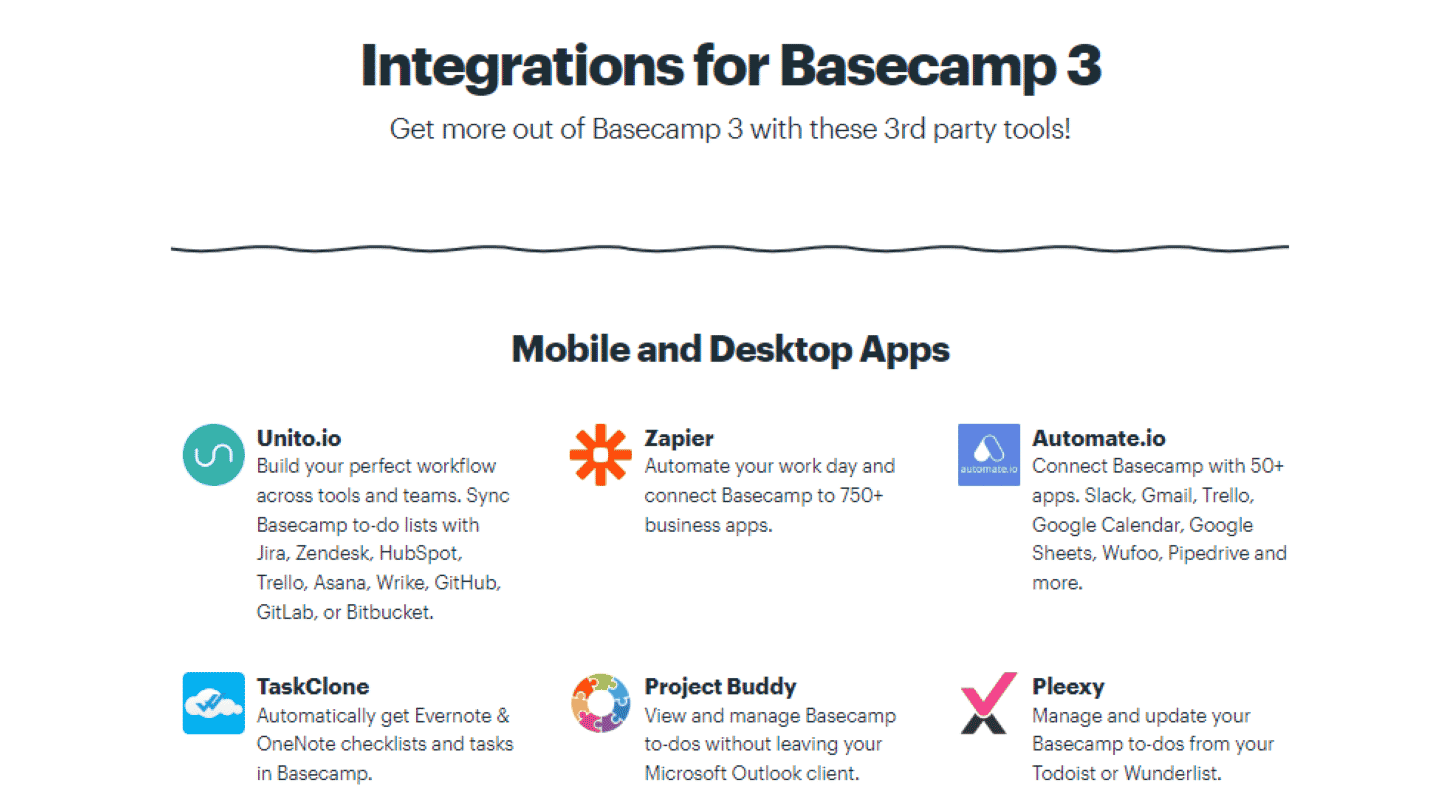
Basecamp offers a marketplace of integrations covering all the fields required for project management:
- Time tracking & billing: Clockify, Toggl, Timely… These applications are essential for tracking the actual time spent by teams on a project, and for invoicing the customer based on this information.
- Planning and reporting: DNS Check, Ganttify, Easy Insight, Slickplan… These integrations enable you to go further than Basecamp’s planning functions, and obtain a wealth of information through reports.
- Web development: Git Helpers, Saber Feedback, Instabug, OAuth.io… These integrations will be useful to anyone whose business involves web development.

Thanks to its integration with Zapier, Basecamp can integrate over 4,000 third-party applications. Basecamp 3 also enables developers to integrate their products directly.
Basecamp: prices
Among the best project management software, Basecamp is the only one that doesn’t charge per user, but for the whole team. This is an asset for large structures.
Basecamp offers two different plans:
- Basecamp Pro Unlimited: at $299 per month, per team.
- Basecamp: $15 per user.
Basecamp Pro Unlimited includes all Basecamp features, for an unlimited number of projects, users and customers. It also gives access to 10 times 500 GB of storage, and priority support.
My advice
The price of Basecamp Pro may seem high, but you need to take into account the number of team members: the larger the team, the more cost-effective Basecamp will be compared with software that has to be paid for by each user.
For small teams, the BaseCamp simple subscription offers 500 GB of storage.
Try Basecamp for free
Basecamp offers a version for $15 per user: don’t hesitate to try it out!
The main alternatives to Basecamp
Basecamp’s functional depth can sometimes be too limited for complex projects. For teams with highly complex projects to manage, we recommend tools with greater functional depth, such as Monday and Hive.
For those with a small team and a smaller budget, we advise you to consider Zoho Projects or Asana.
And finally, for those with planning needs above all else, you can take a look at Notion, or Trello.

